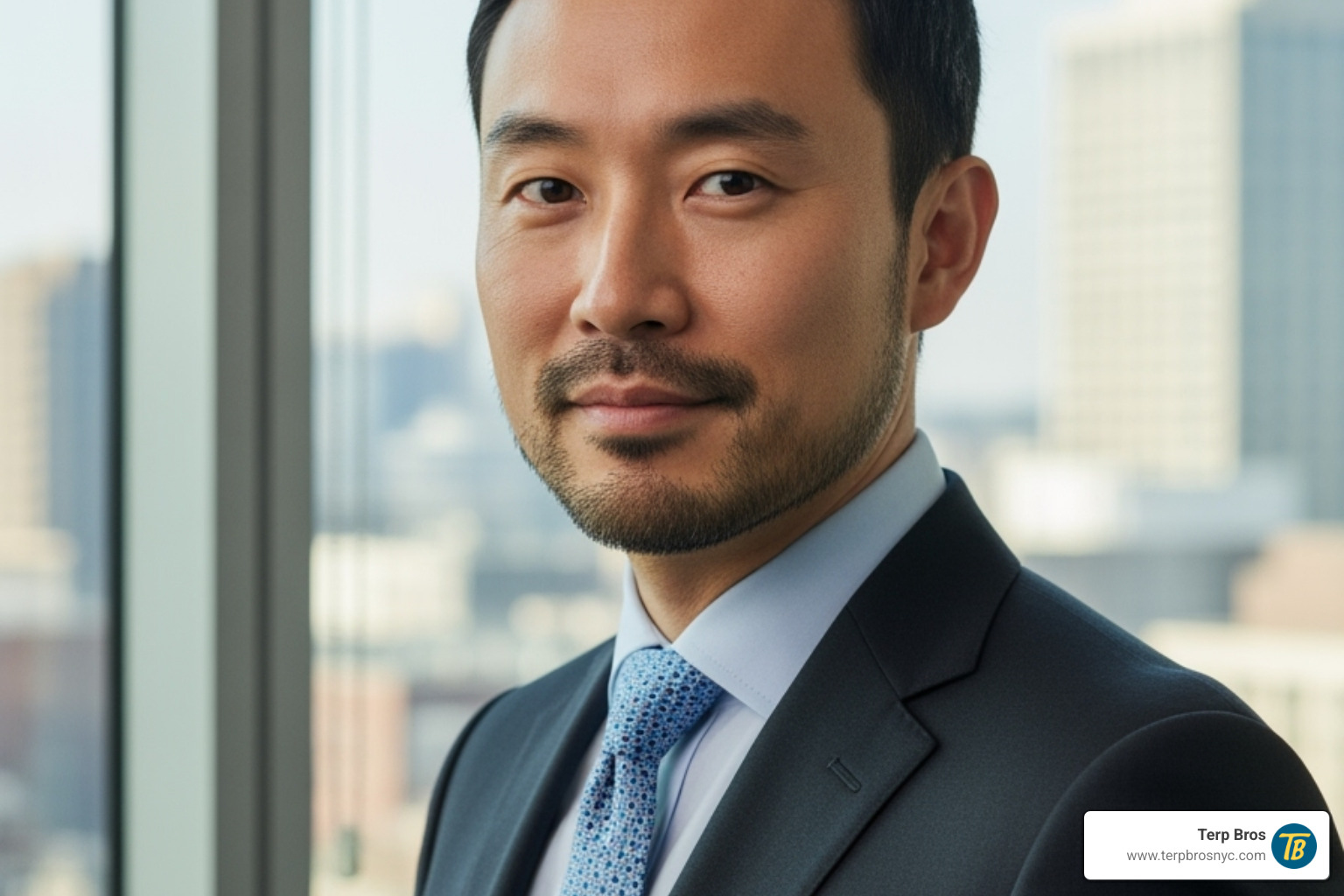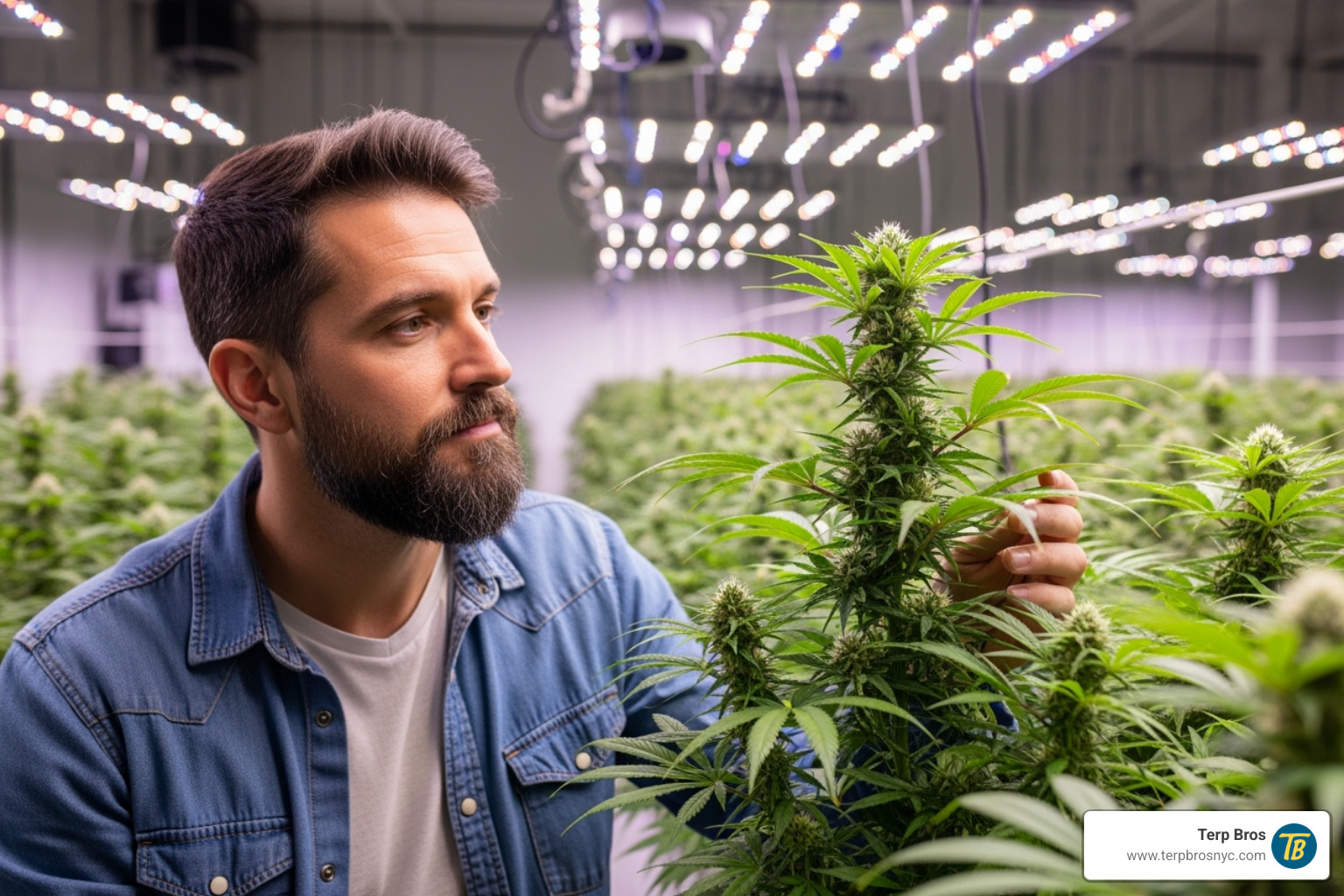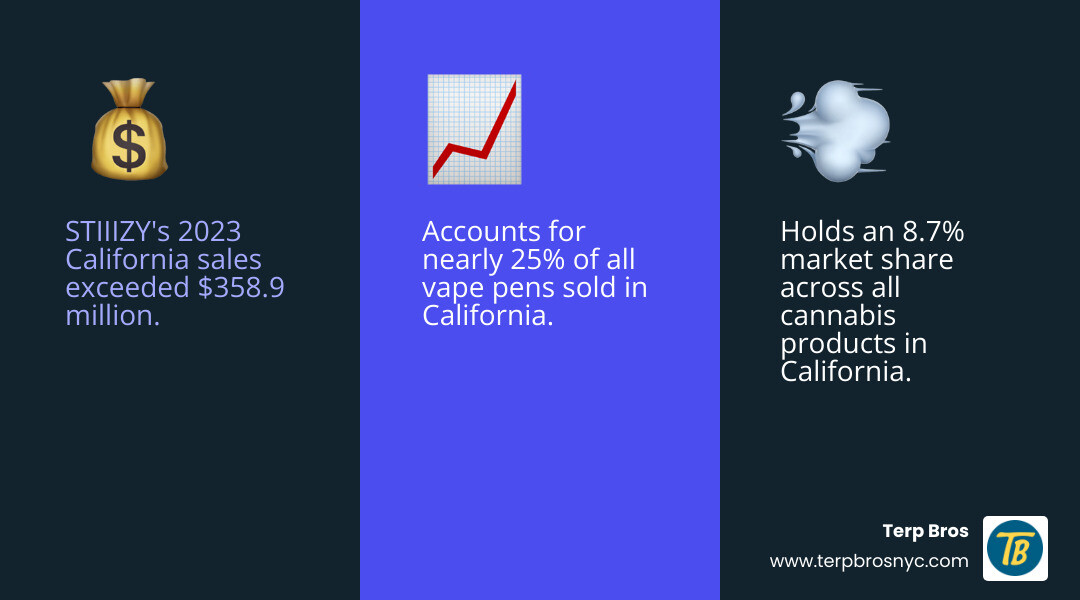
Owner of Stiiizy: Unveiling the 2025 Giant
The Rise of a Cannabis Giant
The owner of stiiizy represents one of the most compelling success stories in modern cannabis business, changing from a simple vape concept into America’s top-selling cannabis brand. The brand was co-founded in 2017 by two visionaries: James Kim, an Army veteran who serves as CEO, and Tony Huang, who has faced recent legal controversies while remaining involved as an advisor.
Quick Answer: Who Owns the Brand?
- Primary Owner/CEO: James Kim (Army veteran, public face of brand)
- Co-founder: Tony Huang (real estate investor, current advisor role)
- Parent Company: The Shryne Group
- Founded: 2017 in Los Angeles
- Current Status: Kim leads daily operations while Huang maintains advisory position
James Kim’s journey from combat veteran dealing with PTSD to cannabis entrepreneur captures the transformative power of the industry. His military background with the 101st Airborne Division during a 13-month tour in Iraq shaped his mission to create products that could help others facing similar challenges.
The brand’s meteoric rise is impressive – it now controls 8.7% of California’s entire cannabis market with over $358 million in annual sales. Their vape products alone represent nearly 25% of all vape pens sold in the state, making them the undisputed leader in their category.
However, the ownership story isn’t without complexity. While Kim represents the inspirational face of the brand, co-founder Tony Huang has faced allegations linking him to properties used for illegal cannabis sales, resulting in $1 million in civil penalties. The company strongly denies any connection between these allegations and their legal operations.
As someone who has steered the challenges of building a legal cannabis business in New York’s CAURD program, I understand the complexities these owner of stiiizy figures face in establishing legitimate operations while overcoming past obstacles. Experience in the industry has shown how crucial transparent leadership is in building community trust in this evolving industry.

When we look at this brand, we see a company that burst onto the scene in 2017, quickly establishing itself as a dominant force. It wasn’t just about selling cannabis; it was about creating a cannabis lifestyle brand that resonated with a diverse audience. Their approach to brand innovation, especially in electronic cannabis oil delivery systems, set them apart. We’ve seen similar shifts in the New York market, where quality and innovation are becoming paramount.
A New Standard in Cannabis
From the outset, the brand aimed to revolutionize the cannabis industry by focusing on a discreet experience built for portability and convenience. We’ve certainly seen the demand for such products grow here in New York, where discretion can be key for many consumers. Their proprietary pod system, which gained a cult-like following, truly set a new industry standard for how consumers could enjoy cannabis.
This focus on user experience and cutting-edge technology helped them become one of the most popular and fastest-growing vaporizer brands in cannabis. They really changed the game, making vaping effortless and stylish.
Who is the Owner of STIIIZY? Unpacking the Leadership
When people ask about the owner of stiiizy, they’re really asking about two very different people who came together to build something extraordinary. James Kim and Tony Huang co-founded this cannabis empire in 2017, but their stories couldn’t be more different.
The brand operates under The Shryne Group, which is basically a fancy way of saying they control everything from growing the plants to selling the final product. It’s what we call “seed-to-sale” in the cannabis world – and trust me, it’s not easy to pull off.
James Kim stepped up as CEO and became the face everyone knows. Meanwhile, Tony Huang has taken more of a backseat role as an advisor, partly because his past has gotten pretty complicated (we’ll get into that).
Behind the scenes, they’ve built a solid leadership team. President Tak Sato and VP of HR Lena Song have been crucial in handling all the licensing headaches and compliance stuff that comes with running a legal cannabis business. Having worked through New York’s CAURD program myself, I can tell you that having the right people in these roles makes all the difference.
Who is James Kim, the Public Face of the Brand?

James Kim’s path to becoming the primary owner of stiiizy started in a place most entrepreneurs never experience – a combat zone in Iraq. As an Army veteran who served 13 months with the 101st Airborne Division, Kim came home dealing with PTSD like so many of our brave service members do.
What makes his story special is how he turned that personal struggle into something that helps others. Kim finded that cannabis could provide the relief he was looking for, and instead of keeping that findy to himself, he decided to build a business around it.
Before this brand, Kim was already thinking about electronic delivery systems. He co-founded an e-cigarette store back in 2013, learning the ins and outs of how these devices work. When cannabis started going legal, he saw an opportunity to combine his technical knowledge with his personal mission.
In 2016, Kim and his partners developed what would become the first device. By 2018, they launched it to the world. The timing was perfect, and the product was exactly what people wanted – something discreet, effective, and easy to use.
What really gets me about Kim’s story is how he’s never forgotten where he came from. The company actively partners with organizations like Weed for Warriors, which helps veterans access cannabis for PTSD treatment. It’s not just marketing – it’s personal for him. Scientific research on cannabis for PTSD shows that 16 states now specifically allow cannabis for PTSD treatment, proving Kim was ahead of his time.
His journey is a reminder that sometimes the best businesses come from wanting to solve a real problem for real people.
What Are the Allegations Against Co-Founder Tony Huang?
While James Kim represents the inspiring veteran story, the other owner of stiiizy, Tony Huang, brings a much more complicated background to the table. Huang’s business dealings have drawn serious attention from investigators and regulators, creating ongoing challenges for the brand.
The main issue revolves around Huang’s real estate investments. Investigators have connected him to multiple holding companies that allegedly served as landlords for illegal cannabis dispensaries. We’re talking about nine different properties that authorities say were used for unlawful cannabis sales, even while the company was building its legitimate, licensed business.
This isn’t just gossip – there have been real legal consequences. Compton city lawyers claimed Huang was “known for his serial operations of various illegal cannabis dispensaries” and accused him of controlling illegal sales through his role as a landlord. The result? Huang and two others were hit with $1 million in civil penalties for their alleged connections to illegal cannabis operations.
Huang’s team has pushed back hard against these allegations. His spokesman says he bought investment properties without knowing tenants would use them as illegal dispensaries, and that these activities violated their leases. According to his side of the story, he tried to evict the problem tenants once he found out what was happening.
The situation has gotten so serious that state regulatory bodies have launched their own investigations. For anyone wanting to understand the full scope of these allegations, A deep dive into the LA Times investigation lays out all the details.
This whole controversy shows just how tricky it can be to build a legitimate cannabis business when you have connections to the industry’s less-regulated past. Even as legal cannabis grows, those old shadows can still cause problems for brands trying to build consumer trust.
What is the STIIIZY Philosophy?
At the heart of the brand’s identity are its “three I’s”: Influence, Inspire, and Innovate. This philosophy isn’t just a catchy slogan; it’s woven into their marketing strategy and their very approach to the cannabis industry. The brand name itself is a play on the California term “steez” (slang for effortless style), reinforcing their commitment to a distinct identity.
The company has adopted a marketing strategy that draws inspiration from streetwear culture, utilizing a “drop” model for new products, similar to how popular apparel brands release limited-edition collections. This approach creates hype and exclusivity, fostering a strong connection with their audience. They also emphasize community connection, showcasing local artists in their flagship stores and participating in various community outreach events, like Toys for Tots drives and anti-Asian hate marches. This focus on culture and community is something many in the industry deeply resonate with as they strive to build a vibrant cannabis culture.
How Did the Brand Expand Beyond Vape Pens?

While the brand made its initial mark with its vape pens, its journey has seen a significant product expansion, changing it into a full-fledged cannabis powerhouse. Today, the owner of stiiizy oversees a diverse portfolio that includes much more than just vapes. They now offer a wide array of edibles, premium flower, extracts, and pre-rolls, catering to every preference.
This expansion has cemented their market dominance. The brand’s overall sales in California eclipsed $358.9 million in 2023, controlling an 8.7% market share across all cannabis products. Their vape pens remain particularly strong, accounting for nearly a quarter of all vape pens sold in California. This kind of market presence is built not just on variety, but on consistent quality.
To ensure product quality and build consumer trust, the company employs rigorous quality control measures. They’ve been proactive in combating counterfeit products, which is a major concern in our industry, especially with popular brands. They were one of the first brands to include QR codes on their packaging, allowing consumers to verify the legitimacy of their purchases. This transparency is crucial for consumer trust, and it’s a practice applauded and upheld in the legal market, where providing only tested and verified products is paramount.
Navigating Controversy and the Illicit Market
The cannabis industry faces a unique challenge that most other industries don’t – dealing with its complicated past while building a legitimate future. Even successful brands like this one, with its impressive market presence, haven’t escaped this reality. The owner of stiiizy story includes some serious allegations that highlight just how complex this transition from prohibition to legalization can be.
Tony Huang’s alleged connections to properties used by illegal dispensaries have created a storm of controversy and lawsuits. These claims suggest the kind of ethical gray areas that can emerge when building a business in a newly legal industry. It’s the kind of situation that makes other cannabis entrepreneurs, including those building the legal cannabis industry in new markets, take notice.
The industry backlash has been swift and significant. The United Cannabis Business Association (UCBA), a major trade group, has openly considered boycotting the company’s products. When your own industry peers are questioning your practices, that’s a serious red flag that goes beyond just legal troubles.
This situation really drives home why transparency and clean operations matter so much in cannabis. Experience in the industry has shown how important it is to build trust with both regulators and community members. The cannabis industry is still proving itself as a legitimate business sector, and controversies like this can set everyone back.
How Has the Brand Responded to Controversy?

President Tak Sato hasn’t backed down from defending the company. His public statements have been clear and direct – these allegations stem from “many years ago” and have “zero connection to the company’s fully legal and confined activities.” Sato dismisses the UCBA’s boycott threats as representing only a small minority, claiming that most retailers continue supporting the brand.
The numbers seem to back up Sato’s confidence. Despite all the controversy swirling around the owner of stiiizy allegations, their market performance remains incredibly strong. Those $358.9 million in annual sales and 8.7% market share don’t happen by accident. Their vape business alone pulls in nearly $25 million monthly, representing almost a quarter of all vape pen sales in their home state.
The company has also expanded far beyond their original base, operating stores in Michigan and maintaining distribution deals with 500 stores across multiple states. This national footprint shows they’ve managed to maintain business relationships despite the ongoing legal issues.
One area where the company has been particularly proactive is counterfeit product mitigation. They work directly with customs agents to stop fake products shipped from overseas – a problem that hurts both consumers and legitimate businesses. Their QR code verification system was pioneering in the industry, allowing customers to confirm they’re getting authentic products.
This focus on consumer trust and product authenticity shows how the company is trying to maintain its reputation even while dealing with ownership controversies. The future outlook really depends on whether they can separate their current operations from past allegations and continue building consumer perception as a trustworthy brand.
Frequently Asked Questions about STIIIZY’s Ownership
People often have questions about who really runs STIIIZY, especially given the brand’s massive success and recent controversies. Let’s clear up some of the most common questions about the owner of stiiizy and what’s happening behind the scenes.
Who are the founders of STIIIZY?
The story of STIIIZY begins with two co-founders who brought very different backgrounds to the table. James Kim, an Army veteran who served with the 101st Airborne Division in Iraq, is the primary owner of stiiizy and serves as CEO today. His personal journey with PTSD and finding cannabis as a therapeutic tool really shaped the brand’s mission from day one.
Tony Huang was the other co-founder back in 2017, bringing real estate investment experience to the partnership. While Kim became the public face of the company, Huang currently serves as an advisor to The Shryne Group, which is the parent company that owns STIIIZY. It’s interesting how their different skill sets – Kim’s military discipline and passion for helping others, combined with Huang’s business acumen – helped launch what became America’s top-selling cannabis brand.
What is the meaning behind the name STIIIZY?
Here’s something fun – the name STIIIZY is actually a clever play on California slang. It comes from “steez,” which means “style with ease.” You know, that effortless cool that everyone wants but few can pull off naturally.
But those three I’s in the middle aren’t just for show. They represent the brand’s core philosophy: Influence, Inspire, and Innovate. This isn’t just marketing speak either – you can see these principles in everything from their product development to their community engagement efforts. They really do try to influence cannabis culture, inspire people (especially veterans), and innovate with new products and technology.
What controversies has STIIIZY’s ownership faced?
This is where things get complicated, and honestly, it shows how tricky the cannabis industry can be even for successful brands. Tony Huang, the co-founder, has faced some serious allegations that have created real challenges for the company.
The main issue involves claims that Huang was linked as a landlord to properties used for illegal cannabis sales. These aren’t small accusations either – authorities alleged he owned nine properties that were used for unlawful cannabis operations. The situation got so serious that he and two others were ordered to pay $1 million in civil penalties related to these illegal cannabis sales.
Huang’s team has pushed back hard, saying he bought investment properties that tenants then used illegally without his knowledge and against their lease agreements. They claim he tried to evict these problematic tenants when he found out what was happening.
STIIIZY as a company strongly denies any connection between these allegations and their legal operations. President Tak Sato has been vocal about this, emphasizing that these issues are from “many years ago” and have “zero connection” to their current legal business. Still, the controversy has been significant enough that some industry groups have considered boycotting STIIIZY products.
It’s a reminder of how complex the cannabis industry can be, especially for those working to build legitimate, community-focused businesses. This situation is a reminder of how important transparency and community trust are in this evolving industry, especially for businesses committed to social equity.
The Takeaway on STIIIZY’s Ownership
The story of the owner of stiiizy is a compelling look into what it takes to build a successful cannabis brand in a complex and evolving industry. It’s a journey marked by both incredible triumphs and significant challenges. The brand’s success, driven by a clear mission and innovative products, shows the power of connecting with a community. At the same time, the controversies highlight the hurdles that many in the legal cannabis space face when dealing with the industry’s past. Ultimately, the STIIIZY story serves as a powerful case study in brand-building, resilience, and the ongoing effort to establish legitimacy and trust in the modern cannabis market.

